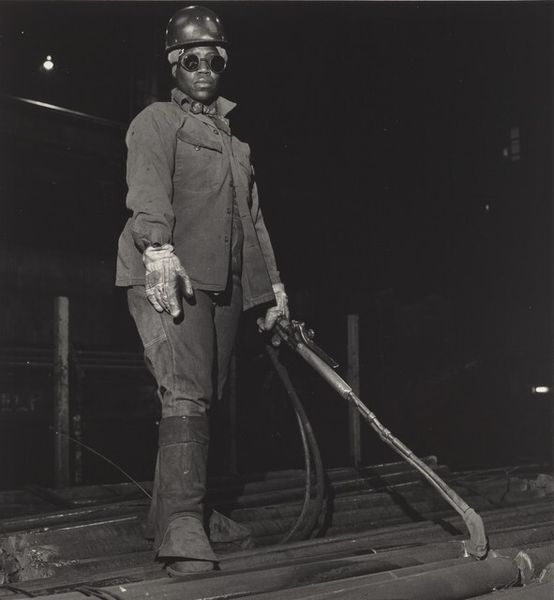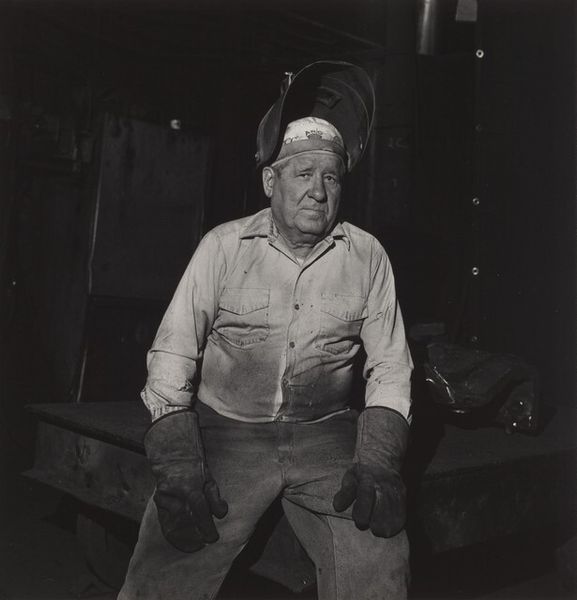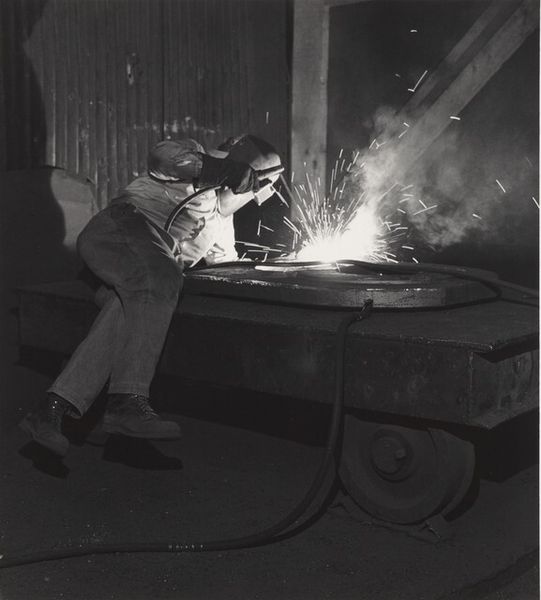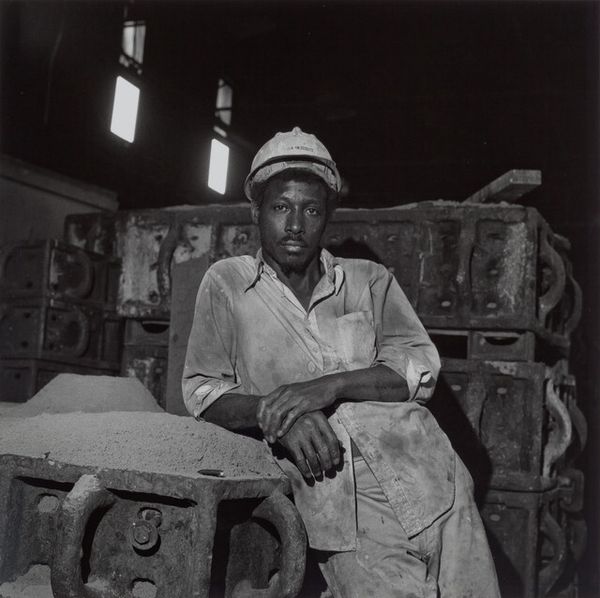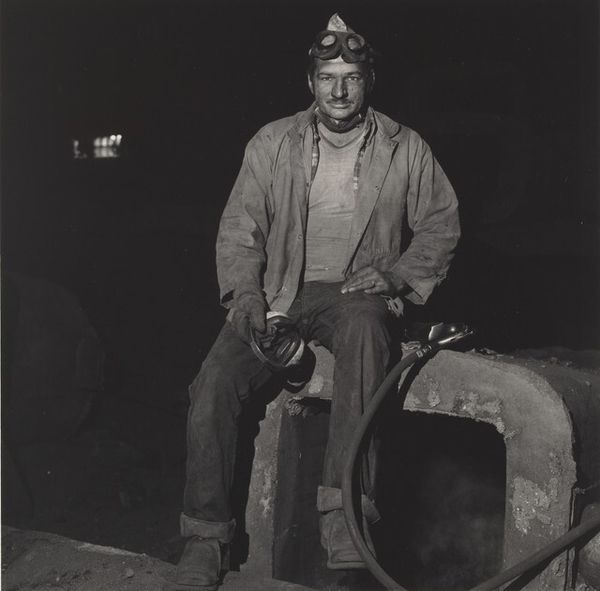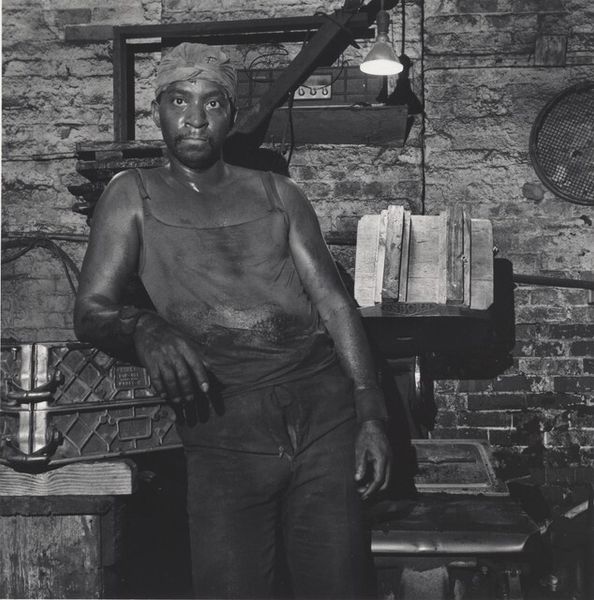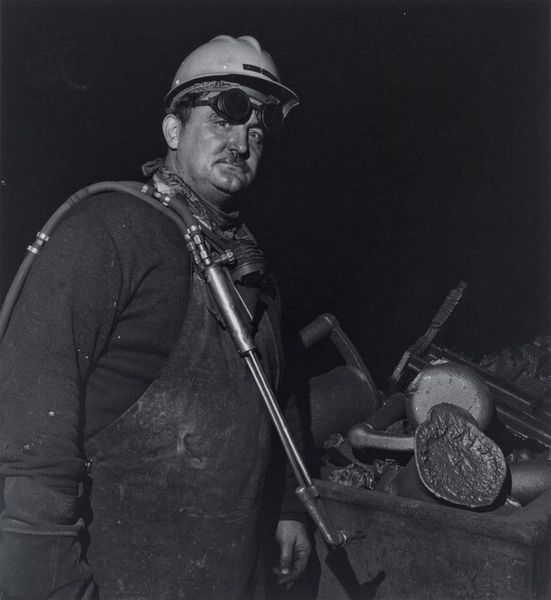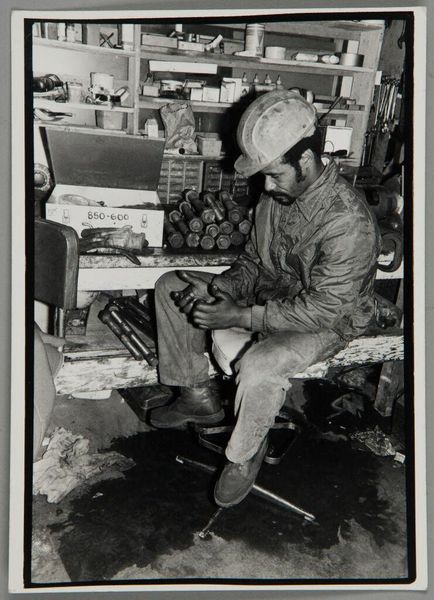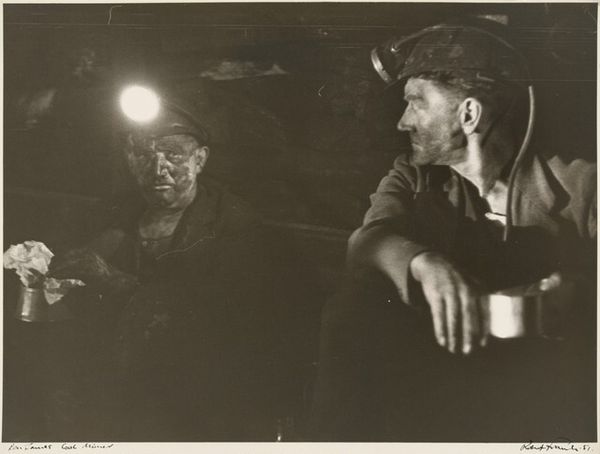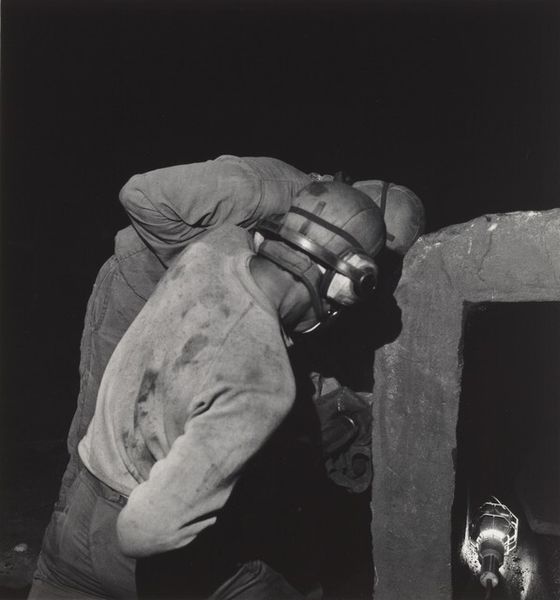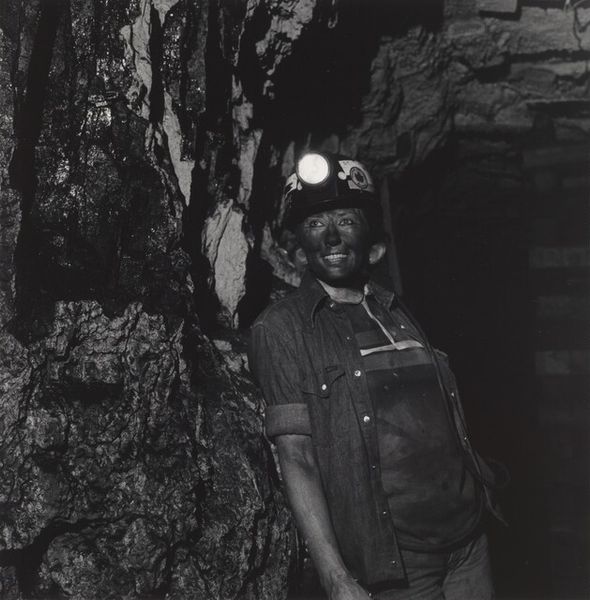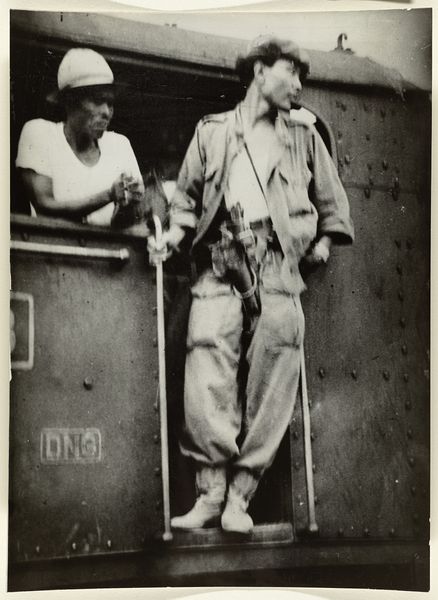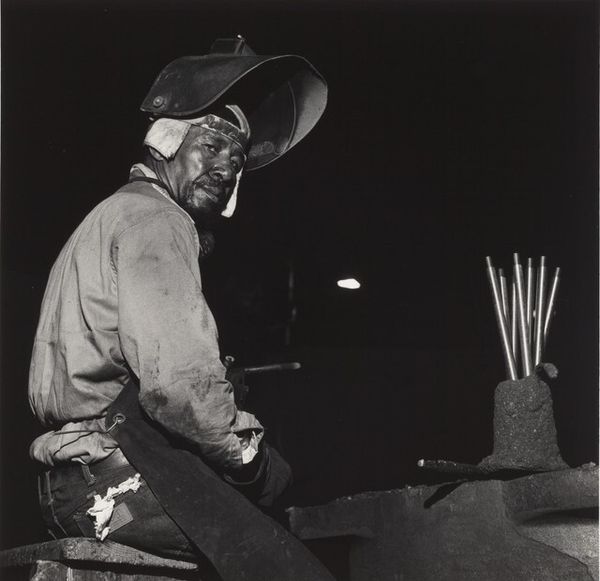
photography, gelatin-silver-print
#
portrait
#
black and white photography
#
social-realism
#
photography
#
historical photography
#
black and white
#
gelatin-silver-print
#
monochrome photography
#
ashcan-school
#
monochrome
#
realism
#
monochrome
Dimensions: image: 18.9 x 18 cm (7 7/16 x 7 1/16 in.) sheet: 25.3 x 20.3 cm (9 15/16 x 8 in.)
Copyright: National Gallery of Art: CC0 1.0
Editor: This is Milton Rogovin's "Amherst Foundry (Working People series)," a gelatin-silver print from 1979. The contrast between light and shadow really strikes me; it creates a somber, yet dignified portrayal of the worker. What structural elements stand out to you in this composition? Curator: The most striking formal element is the geometry within the frame. Consider the wheel and the pipe that echo curves on the left against the subject’s angular pose. Observe how the straight lines of his suspenders and the hard hat are set in contrast with the circularity on the periphery, establishing visual tension and equilibrium. Editor: That's a great observation! How does the artist manipulate light to contribute to this formal arrangement? Curator: Note the source of light coming from the top right, how it illuminates the figure, emphasizing the texture of his clothes and his face, but leaves the environment ambiguous and obscure. The tonal range accentuates form through light play across the textures in a tightly organized pictorial space, intensifying the immediate and unadorned presence of the subject. It transforms a mundane subject into something monumental. Editor: I see how the light shapes the figure, almost like a sculpture. It also seems to flatten certain planes, creating interesting spatial ambiguities. Is there any other technique he uses that contributes to this? Curator: Consider the depth of field. Rogovin opts for a shallow depth of field which keeps the focus sharply on the worker while softly rendering the background. This formal choice isolates him while adding an essential contributing abstractive layer. What is your final conclusion after examining this more closely? Editor: I noticed how meticulously Rogovin uses light and texture, shaping the photo's internal architecture. He orchestrates curves and angles for balance. A single, close look reveals a depth I hadn't initially perceived. Curator: Indeed. Formal analysis reveals the carefully crafted composition and illuminates the work’s visual power.
Comments
No comments
Be the first to comment and join the conversation on the ultimate creative platform.

